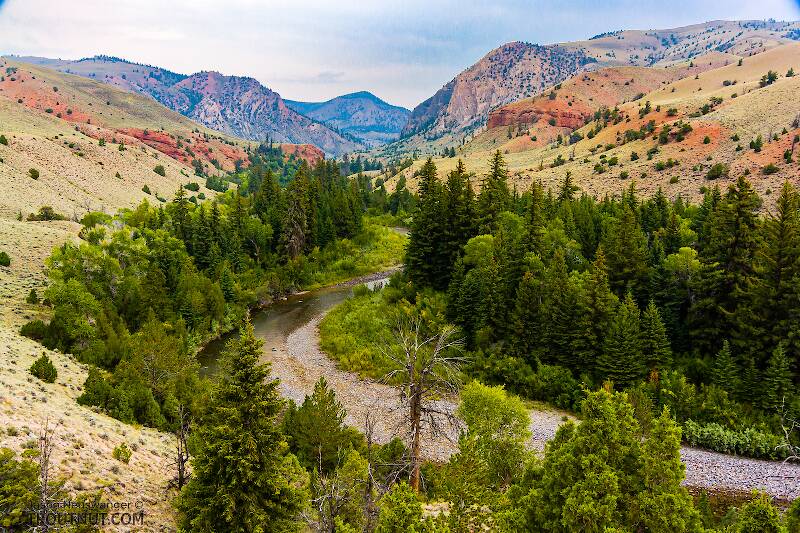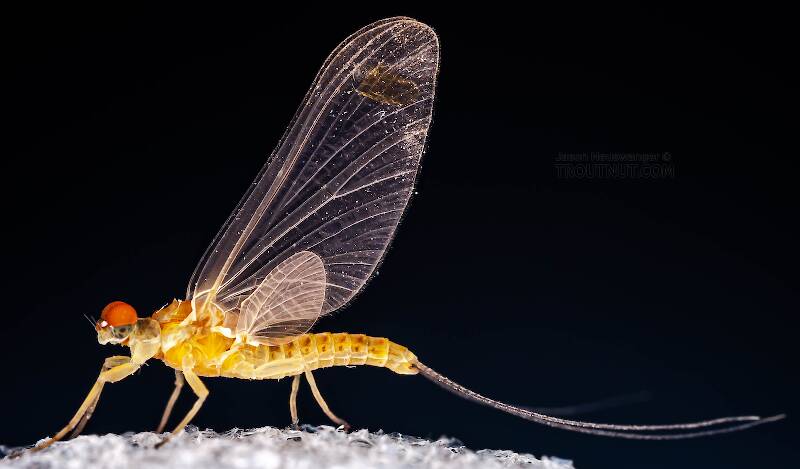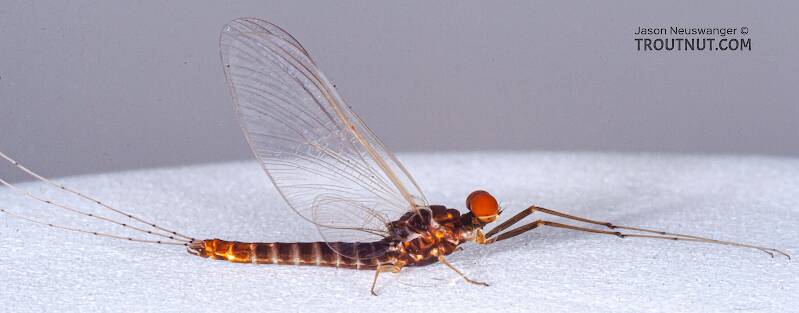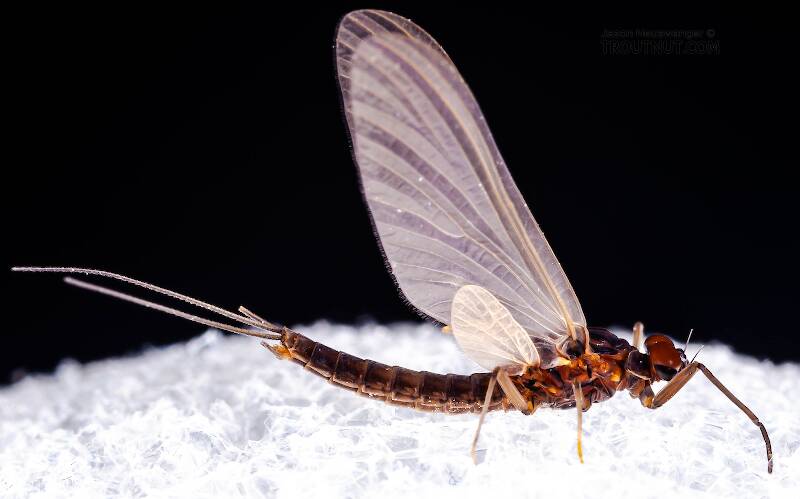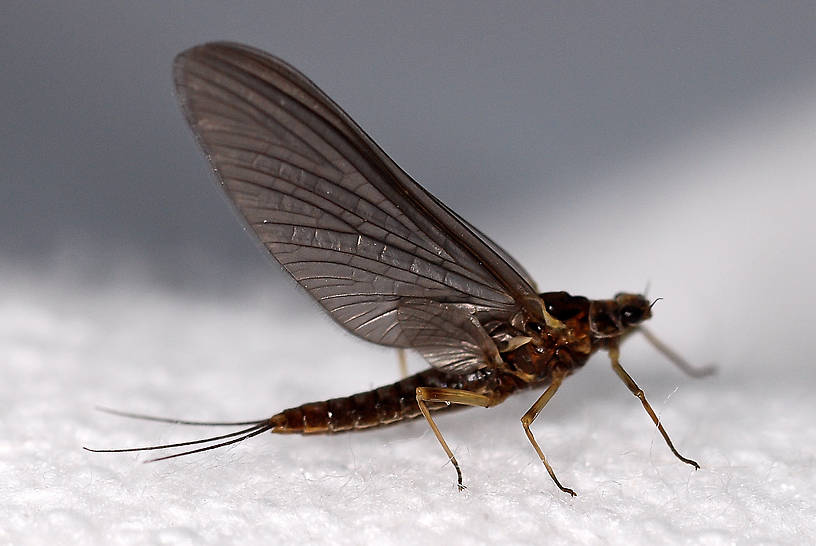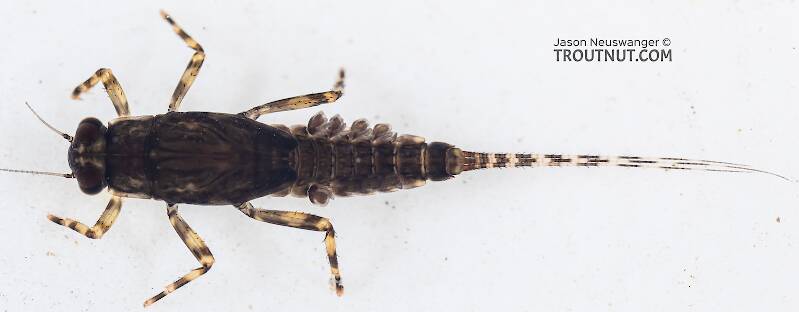
Hex Mayflies
Hexagenia limbata
The famous nocturnal Hex hatch of the Midwest (and a few other lucky locations) stirs to the surface mythically large brown trout that only touch streamers for the rest of the year.
Featured on the forum

Troutnut is a project started in 2003 by salmonid ecologist Jason "Troutnut" Neuswanger to help anglers and
fly tyers unabashedly embrace the entomological side of the sport. Learn more about Troutnut or
support the project for an enhanced experience here.
Red Quills
Like most common names,"Red Quill" can refer to more than one taxon. They're previewed below, along with 12 specimens. For more detail click through to the scientific names.
Mayfly Species Ephemerella subvaria
These are often called Red Quills.
The Hendrickson hatch is almost synonymous with fly fishing in America. It has been romanticized by our finest writers, enshrined on an untouchable pedestal next to Theodore Gordon, bamboo, and the Beaverkill.
The fame is well-deserved. Ephemerella subvaria is a prolific species which drives trout to gorge themselves. Its subtleties demand the best of us as anglers, and meeting the challenge pays off handsomely in bent graphite and screaming reels.
The fame is well-deserved. Ephemerella subvaria is a prolific species which drives trout to gorge themselves. Its subtleties demand the best of us as anglers, and meeting the challenge pays off handsomely in bent graphite and screaming reels.

I collected this female Hendrickson dun and a male in the pool on the Beaverkill where the popular Hendrickson pattern was first created. She is descended from mayfly royalty.
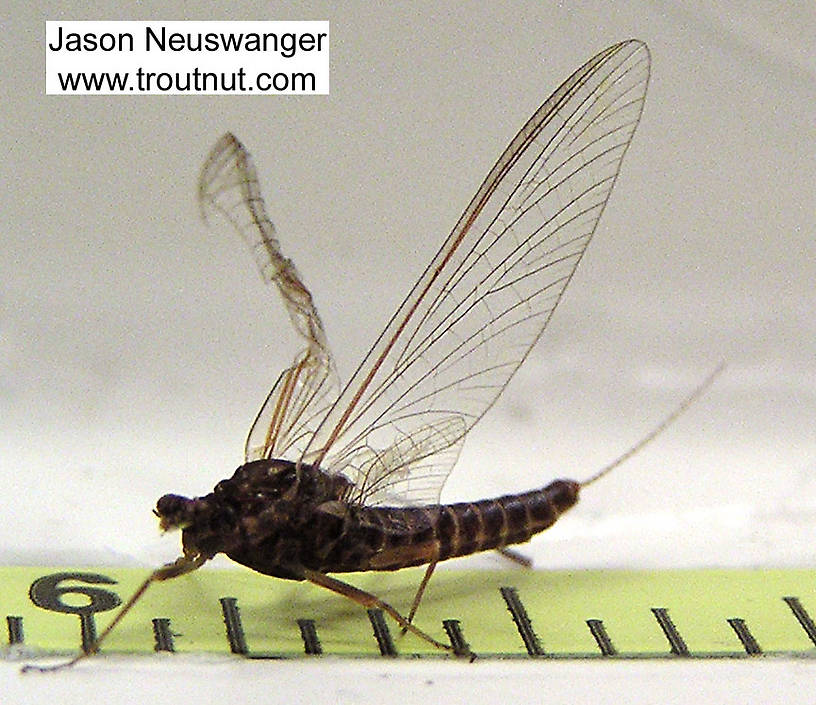
This one's a bit bedraggled because it was rainy and I had a hard time keeping anything dry, including the container I was putting mayflies in. I was practically juggling up there balanced on a rock trying to catch mayflies and trout at the same time.
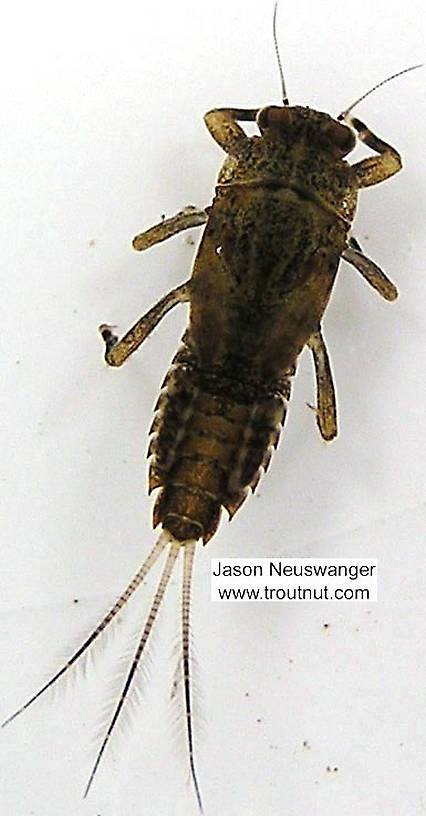
This is another unusual brown Ephemerella nymph. The "fan-tail" which defines the Ephemerella genus is particularly evident on this specimen.
See 31 more specimens...
Mayfly Species Ephemerella invaria
These are sometimes called Red Quills.
This species, the primary "Sulphur" hatch, stirs many feelings in the angler. There is nostalgia for days when everything clicked and large, selective trout were brought to hand. There is the bewildering memory of towering clouds of spinners which promise great fishing and then vanish back into the aspens as night falls. There is frustration from the maddening selectivity with which trout approach the emerging duns--a vexing challenge that, for some of us, is the source of our excitement when Sulphur time rolls around.
Ephemerella invaria is one of the two species frequently known as Sulphurs (the other is Ephemerella dorothea). There used to be a third, Ephemerella rotunda, but entomologists recently discovered that invaria and rotunda are a single species with an incredible range of individual variation. This variation and the similarity to the also variable dorothea make telling them apart exceptionally tricky.
As the combination of two already prolific species, this has become the most abundant of all mayfly species in Eastern and Midwestern trout streams.
Ephemerella invaria is one of the two species frequently known as Sulphurs (the other is Ephemerella dorothea). There used to be a third, Ephemerella rotunda, but entomologists recently discovered that invaria and rotunda are a single species with an incredible range of individual variation. This variation and the similarity to the also variable dorothea make telling them apart exceptionally tricky.
As the combination of two already prolific species, this has become the most abundant of all mayfly species in Eastern and Midwestern trout streams.
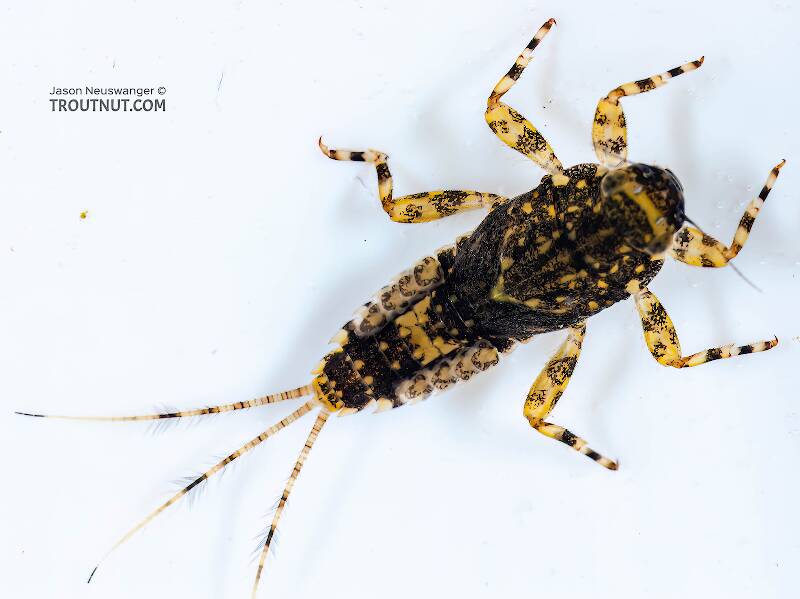
This small Ephemerella invaria nymph was at least a month away from emergence.
See 42 more specimens...
Mayfly Species Neoleptophlebia adoptiva
These are very rarely called Red Quills.
This is the best Spring hatch after the Quill Gordons (Epeorus pleuralis) but before the Hendricksons (Ephemerella subvaria) in most parts of the East, although it can overlap with both. The Blue Quills are small mayflies (hook size 16-20) but they can hatch in incredible numbers at a time when eager trout are just beginning to look to the surface after a hungry winter.
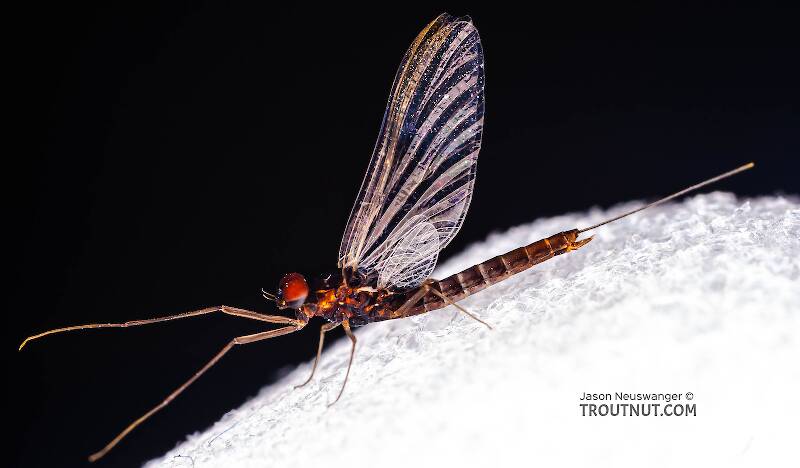
Based on the pale longitudinal forewing veins (excepting the costals), dark middle terga, and genitalia (Burks '53), this specimen is P. adoptiva.
Mayfly Species Rhithrogena impersonata
These are very rarely called Red Quills.
This intriguing species has two distinct colors of nymphs, which were once considered to be different species. Most nymphs are a dark olive gray, but some are a surprisingly bright reddish brown. The red ones were once classified as Rhithrogena sanguinea. There is no apparent difference between the adults of the two varieties.

This was the only Rhithrogena specimen in a large sample of nymphs from a small Catskill stream. It looks virtually identical to Rhithrogena impersonata specimens collected in the Midwest, but I didn't get to check the distinguishing features under a microscope.
See 2 more specimens...
Mayfly Species Rhithrogena jejuna
These are very rarely called Red Quills.
Mayfly Species Ephemerella tibialis
These are very rarely called Red Quills.
Ehhemerella tibialis (Little Western Red Quill, Little Western Dark Hendrickson) is a common western species that can be very important at times. It is perhaps also one of the most confusing species. Unlike it's western generic counterparts the species is described as dark and their females produce dark eggs. Until recently, it was classified in the Serratella genus with species that share these traits. Regardless, it is the only small, dark ephemerellid the western angler is likely to find important. Favorite patterns used for size 18 Pale Morning Dun hatches tied in eastern Dark Hendrickson colors should be the ticket.
As with many of it's sister species it is widely adaptable and may be variable in its appearance. Scientific literature and many angling sources describe it as a small dark mayfly. Not everybody agrees. Ralph Cutter, West Coast author of several angler/entomology books and articles describes it in Sierra Trout Guide as a much larger pale mayfly and dubs it the Creamy Orange Dun. He also mentions the nymph as being easy to recognize by the faint dorsal stripe running down its back and its often fiery brownish red color. These descriptions also match a variation of the ubiquitous and common Ephemerella excrucians.
As with many of it's sister species it is widely adaptable and may be variable in its appearance. Scientific literature and many angling sources describe it as a small dark mayfly. Not everybody agrees. Ralph Cutter, West Coast author of several angler/entomology books and articles describes it in Sierra Trout Guide as a much larger pale mayfly and dubs it the Creamy Orange Dun. He also mentions the nymph as being easy to recognize by the faint dorsal stripe running down its back and its often fiery brownish red color. These descriptions also match a variation of the ubiquitous and common Ephemerella excrucians.
See 4 more specimens...
Mayfly Species Rhithrogena undulata
These are very rarely called Red Quills.
This is one of the two most common species of Rhithrogena.
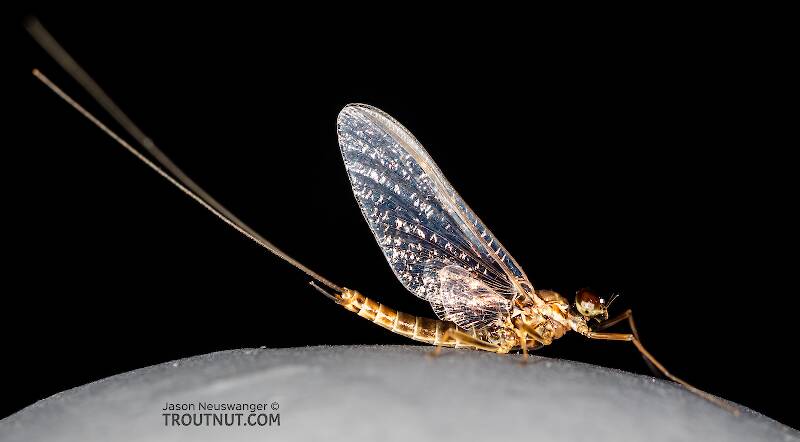
This male was collected at the same time as this female and is likely the same species.
It keys pretty clearly to Rhithrogena undulata using the key in Traver 1935, although the size is larger than expected for that species in that source.
It keys pretty clearly to Rhithrogena undulata using the key in Traver 1935, although the size is larger than expected for that species in that source.
See 1 more specimen...

